


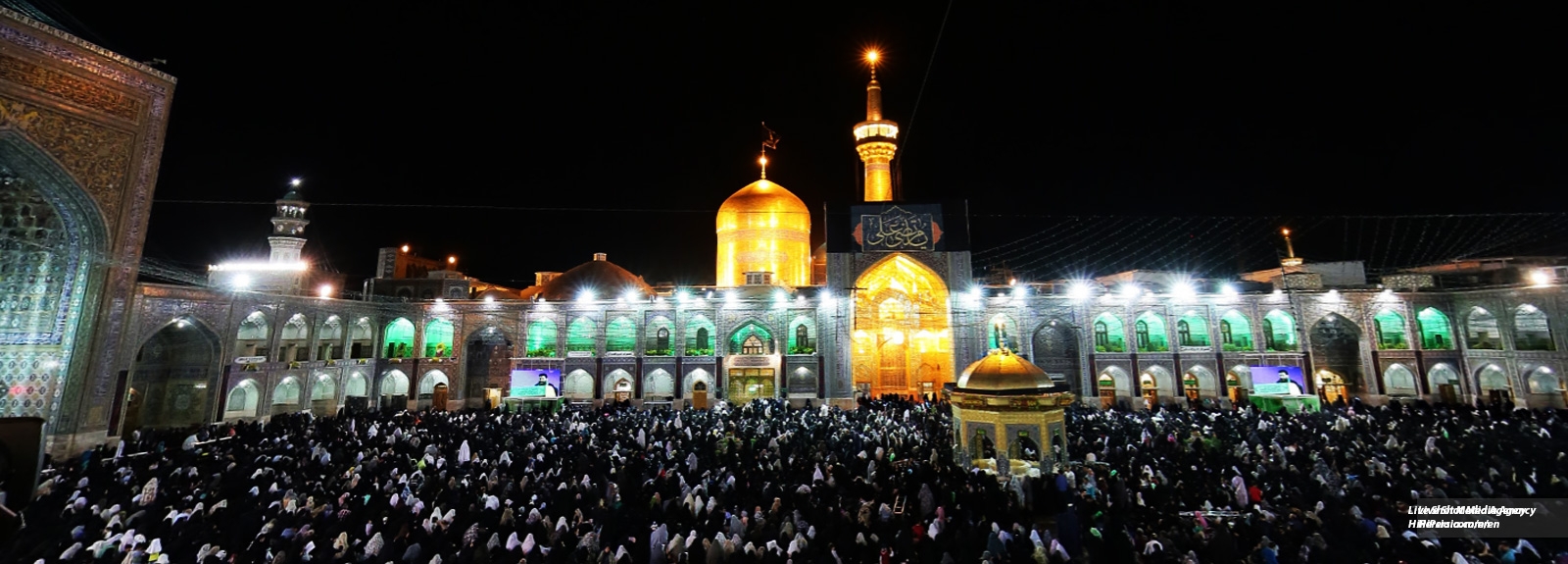
Imam Reza shrine is regarded as one of the most important religious centers of Shiites. Around 20 million pilgrims per year visit the Imam Reza Shrine.
Imam Reza shrine is the burial place of Ali al-Ridha, also called Abu al-Hasan, Ali al-Reza, or in Iran as Imam Reza (AS), the eighth Shiite Imam. This shrine is located in the center of Mashhad in the Khorasan Razavi province and is considered a sacred place for Shiites. The Imam Reza shrine is the central and most prominent tourist attraction of Mashhad, where around 20 million pilgrims visit per year. This massive complex is one of the hubs of religious tourism in Iran. There are tens of valuable architectural heritages around the central holy shrine, which are all of governmental and cultural significance. In general, the Imam Reza shrine is one of the historical monuments of Iran that has always attracted the attention of kings and government officials for many centuries.

Imam Reza (AS) is of descendant of Muhammad, the holy prophet of Islam, appreciated by the Shias of the whole world. Imam Musa al-Kadhim (AS), the seventh Imam of the Shiites, was the father of Imam Reza (AS), and his mother's name was Najmeh. He was born in the city of Medina in 766 AD and moved to Tus in Iran after the order of Al-Ma'mun (The Caliph of Baghdad). Imam Reza (AS) became Imam at the age of 33 and spent his lifespan in Medina. This period coincided with the cruel Abbasid rulers. During this time, he suffered many hardships from these rulers. The beginning of the Imamate of Imam Reza (AS) coincided with the caliphate of Al-Ma'mun, who chose the city of Merv as the center of his caliphate. Many Shiites and Muslims, whom they called Alavids, seized the opportunity and rebelled against the Abbasid caliph. Al-Ma'mun decided to defuse this situation by insisting that Mam Reza (AS) accompany the caliphate and give his government a legitimate look. Therefore, the Caliph of Baghdad forced the Imam to obey him by death threat. After a while, Al-Ma'mun didn't tolerate Imam Reza and martyred him by eating poison in 819 AD.
The Imam Reza shrine is the biggest mosque in the world and the second-largest mosque in terms of capacity. This massive complex contains the mausoleum of Imam Reza, many Sahn's (courtyard in Islamic architecture), and a museum.
The tomb of Imam Reza (AS) is located under a gilded dome, known as Qubba. It's the first built structure in this complex as well. This dome, in terms of height and structure, is exceptional. It is a double-shelled dome with the fine Muqarnas beneath. There is a 13-meter space between the two shells. The total height of this dome from the ground level to the top of this dome is about 31 meters. The exquisite octagonal tiles known as Sanjari tiles, from the Seljuq era, are used on this structure.
In total, there are nine courtyards in the Imam Reza shrine, each of which has its own appearance and atmosphere. In the following, you will find more about the most notable Sahn of Imam Reza shrine (AS).
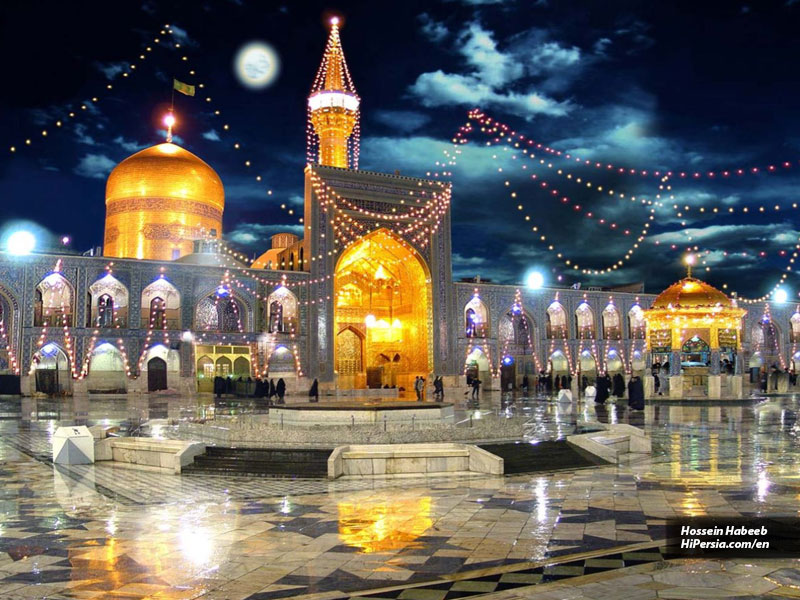
It is the first, oldest, and most magnificent Sahn of Imam Reza shrine, built during the reign of Sultan Husayn Bayqara in 875 AH, located on the north side of the shrine. There are four famous Arches or iwans in Sahne Atiq. Abbasi Arch is located in the north, Golden Arch in the south, Naqqareh Arch in the east, and the Clock Arch in the west of this courtyard. The Naqqareh Khaneh building is located in the Naqqareh Arch, where the Naqareh (a Kind of musical instrument) is played above this arch. These arches, like other parts of this shrine, are built with the most well-made materials and magnificent decorative elements such as tiles, mirror decorations, gilded dome, stone-works, plaster-works, etc.
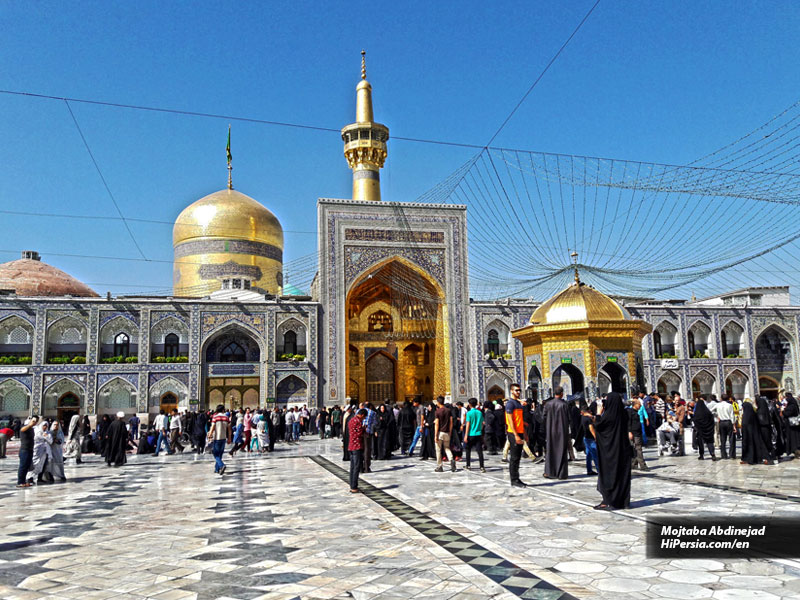
The grave of Sheikh Hurr Ameli, the Tomb of Sheikh Nokhodaki, and the Allameh Hosseini Tehrani Tomb are located in this courtyard. Esmaeel Tala Saqqa Khane (water house) is located at the center of the Sahn-e Atiq. It has a golden dome, and other elements of this complex are used in the design of this Saqqa Khane. It is used as a place of ablution as well.
On the south side of this courtyard, there is a steel window. It is an imposing lattice wall that is used to view the sacred mausoleum of Imam Reza (AS).

Sahne No (Azadi Courtyard)
Shane No is one of the most beautiful courtyards of Imam Reza shrine, located in the eastern part of this holy shrine. This courtyard was built on Fath-Ali Shah Qajar's order in 1233 AH. Its gilding work was done by the order of Nasser al-Din Shah Qajar in 1282 AH. This courtyard is surrounded by the Golden Arch in the west, Bab al-Hikmah Iwan in the north, Clock Iwan in the south, and Bab al-Salam Iwan in the east.

Sahne Jomhoury Eslami (Islamic Republic Courtyard)
After the victory of the Islamic Revolution of Iran, this courtyard was built on the west side of the Imam Reza holy shrine in 1989. There is a beautiful octagonal Saqqa Khane (water house) located in the middle of this courtyard. There is a sundial that displays the religious noon in all seasons. Like other courtyards, it is composed of four Iwans.

Qods Courtyard
Qods courtyard was built after the victory of the Islamic Revolution of Iran, located in the southern part of the holy shrine and next to the historic mosque of Goharshad Mosque. In the middle of this courtyard, there is a beautiful Jerusalem-shaped Saqqa Khane, made of gold. Qods courtyard is the smallest courtyard in this complex, with an area of 2510 square meters.

We can book bus tickets for all of Iran's cities as well. For asking bus ticket, click on the link below.




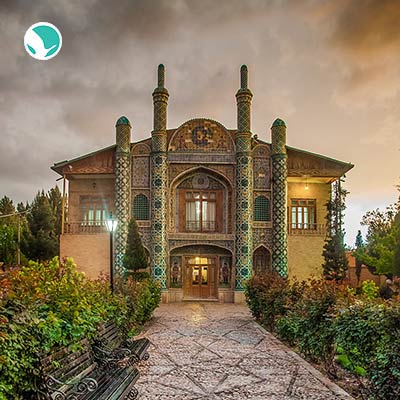
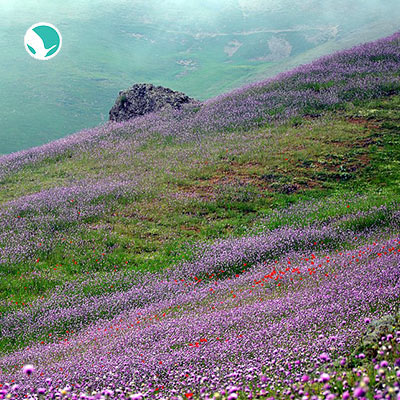
“Oh! Squander not this breath that Heaven hath lent thee, Nor make too sure another breath to borrow!’” Khayam